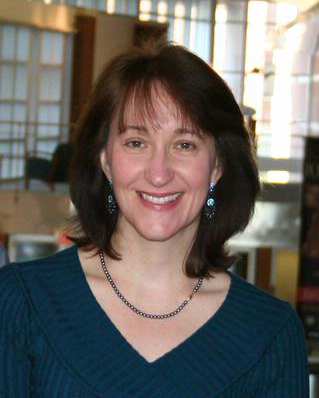
What influenced your decision (personal and professional) to become a scientist in this field?
As an undergraduate at Rutgers University, I spent a semester working as an aide in the Douglas Developmental Disability Center alongside Susan Harris, with boys 7 – 9 years old who were considered at that time to be "developmentally disabled". This included a number of children who would be diagnosed as low functioning ASD (Autism Spectrum Disorder) in today's criteria. The communication and intellectual deficits were quite pronounced in many of these kids and we spent each day teaching the children to discriminate colors ("touch blue") for a food reward, sort blocks into shapes, engage in group activities that teach listening skills, and assist the speech therapists in their work with each child. I was so awed by how severely affected many of the children were. It made me realize how incredibly complex the brain circuits that mediate communication, attention, and cognition are and how lucky we are that these circuits turn our "right" most of the time. I performed my thesis research with Joe LeDoux investigating the role of the amygdala in emotional memory circuits and then moved to Yale University to study the role of the prefrontal cortex in processing complex communication sounds. I felt this work could help us understand the types of circuits that might be altered in ASD to cause communication deficits. During my postdoctoral work at Yale, my 3 year-old nephew showed signs of severe communication and cognitive deficits and was diagnosed with ASD. He has been a motivating force throughout my research.
What are your greatest achievements thus far?
I think every scientist who has ever mentored a student feels that their greatest achievements are the people they mentor and train, since they will have a lasting effect on the scientific world. In addition, I feel that I have been fortunate enough to make some discoveries about the way we process and use auditory information in the brain. In my thesis work in the LeDoux lab, I defined dual cortical and subcortical pathways that carry auditory information to the amygdala during fear conditioning. In my research as a postdoc and later as a faculty member, I showed that there are dorsal and ventral stream pathways, similar to those carrying visual information, that project from the auditory cortex to the prefrontal cortex in primates. Furthermore, one of these auditory recipient sites, the ventrolateral prefrontal cortex, is highly responsive to complex sounds such as vocalizations and some cells in this region integrate face and vocal information. These pathways and features of this area that we see in nonhuman primates suggest a role for the ventral prefrontal cortex in communication in our evolutionary ancestors and elucidate pathways by which acoustic information reaches the frontal lobe and is integrated with other communication relevant information.
What do you hope to accomplish in the next 10 years?
Over the next several years I hope to bring multi-array recording techniques in nonhuman primates into our laboratory in order to understand the organization of information processing and sensory integration in the ventrolateral prefrontal cortex. Furthermore, I hope to use this technology to investigate the interaction of the prefrontal cortex with other cortical and subcortical sites in the temporal lobe. When we see and hear someone speaking to us, what information is conveyed to the prefrontal cortex and how is it processed over the populations of neurons.
What were the biggest professional obstacles you had to overcome? Did you ever have the impression that it would be easier/harder if you were male?
My biggest obstacle was balancing work with being a mom. I tend to throw myself wholeheartedly into my roles and dividing my time was not easy. I worried about my job when I took time off when my daughter was ill. Probably the best thing I did was to remove her from daycare where she was getting sick much of the time and to have a part-time nanny at home. Would this have been easier if I was male? I supposed our society expects more from women than men when it comes to being the primary caretaker. This does make it very difficult given the short maternity leaves that scientific research allows for. Longer maternity leaves for both parents would make having a family much easier.
Do you serve on any committees/hold leadership positions within and outside the University of Rochester (UR)? What is your impression of being a female leader in this environment?
Yes and at the committee level, I don't' feel being a woman is an issue. However, I do think that there are too few women department chairs and deans across universities and colleges.
What strategies do you use to manage both a career and private life?
I don't think I've ever achieved a balance where I can say "This works well." I think you do what you have to in order to feel good as a parent and as a scientist.
In your opinion, what changes are needed in your field, in academia, and in science in general to be more attractive to women+ in neuroscience and possible future scientists?
Longer maternity leave, equal pay and more women in leadership positions – especially as departmental chairs and deans.
What advice would you give to your younger self and to future scientists?
Since I started my faculty position at a distance from any family members, we had no one to help us with our daughter when she was young and also less family around to share our lives with. I wish I had organized my timing so that I started a family while I was living closer to family.